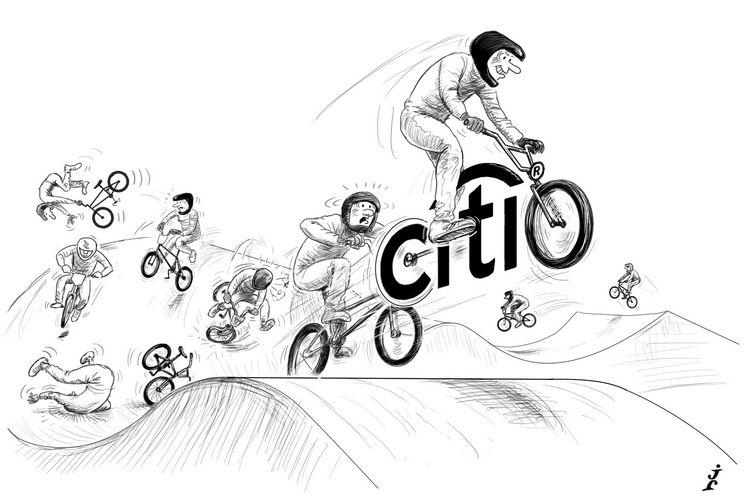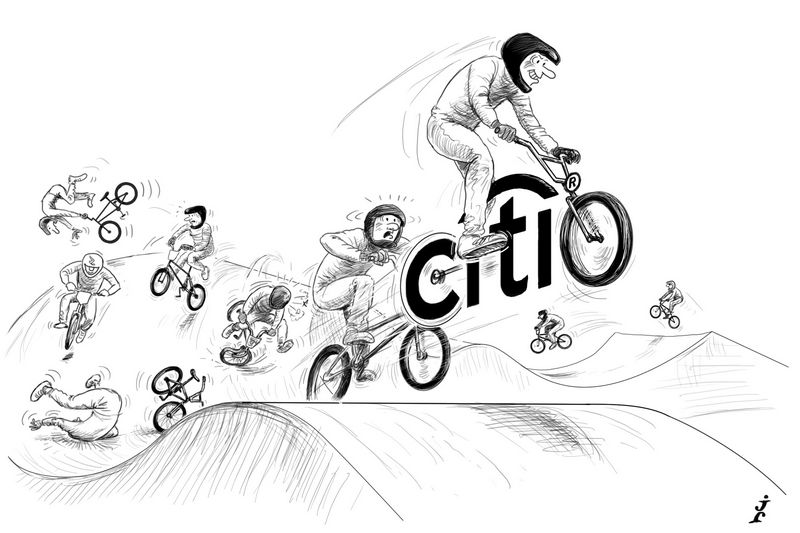The regional powerhouse: In a phenomenal year for the Emerging EMEA bond market, one bank stood out for its geographical reach, its ability to push product boundaries and the sheer volume of deals it has printed. Citigroup is IFR’s Emerging EMEA Bond House of the Year.
To see the full digital edition of the IFR Review of the Year, please <a href="http://edition.pagesuite-professional.co.uk//launch.aspx?eid=24f9e7f4-9d79-4e69-a475-1a3b43fb8580" onclick="window.open(this.href);return false;" onkeypress="window.open(this.href);return false;">click here</a>.
Record issuance volumes, an extraordinary number of deals, currency diversification, product development – the Emerging EMEA bond market has never witnessed as thrilling a year as 2012.
Issuance volumes reached US$126bn from 184 deals in the year to November 15 from the countries under consideration, according to Thomson Reuters data, as borrowers took advantage of low yields, tighter spreads and huge inflows into hard currency emerging markets funds seeking new supply.
In the beginning of January, when the iTraxx SovX CEEMEA index was trading at about 350bp, it seemed inconceivable that the year would pan out the way it did. By November, however, the same index was hovering around the 180bp mark, thanks to these strong technical supports, which in turn were sustained by market-support measures from the world’s central banks.
All the leading banks made hay, especially in the period after US Labor Day as the market began to take on bubble-like characteristics. But two firms led the way in terms of issuance volume and deal numbers – Citigroup and JP Morgan.
It was these two US banks that vied for IFR’s Emerging EMEA Bond House of the Year, with Citigroup taking the mantle, though a mention should also go to BNP Paribas.
The latter might not have the league table ranking or deal numbers of others. Considering the future of certain French banks (though not BNP) was rumoured to be under threat at the end of 2011, the fact that the firm consolidated its position with some standout deals – Russia, Slovenia, Dolphin Energy, First Quantum Minerals – deserves recognition.
Ultimately, however, BNP lacks the breadth of business that JP Morgan and Citigroup can deliver – the French bank failed to lead a meaningful mandate from Turkey in 2012, for example.
First class
JP Morgan remains a first-class emerging markets house whose business in Russia and the CIS and Turkey, is particularly impressive. It has also been the most consistent performer over the past five years. Yet Citigroup is once more a force to be reckoned with, printing, at 62, more deal tranches than any other bank in the period under review.
The bank also heads the league table – at just under US$16bn, according to Thomson Reuters.
“It’s the best year we’ve ever had,” said William Weaver, head of CEEMEA debt capital markets at the bank.
It printed six of the first seven CEEMEA deals of 2012 and never looked back.
Citigroup also ticked the most boxes. It was on the first deal of 2012 (South Africa), the first sukuk of the year (First Gulf Bank), the first bank capital transaction of the year, in a deal that reopened the Russian market after a two-year hiatus (Nomos Bank), the first hybrid Tier 1 perpetual note in the region (VTB), the first euro-rouble offering of the year (Russian Agricultural Bank) and the largest non-Middle East sukuk (Turkey).
Geographically, Citigroup was strong in all the key regions: Russia and the CIS; Turkey; Central Europe; South-East Europe; the Middle East and Africa.
In Russia, for example, Citigroup won arguably the most sought-after mandate – the sovereign, which is IFR’s Emerging EMEA Bond of the Year. The firm was the only lead manager retained from Russia’s last international transaction, its much-hyped but ultimately poorly received comeback after a decade-long absence, in 2010.
Citigroup was also involved in the most talked about CEE deal – VTB’s US$1bn hybrid Tier 1 non-call 10.5 perpetual note (subsequently tapped for a further US$1.25bn in a self-led reopening). It may have lacked the momentum generated by subsequent FIG subordinated bond offerings, as the flexible structure left many would-be investors unsure about what they were buying, but it heralded a new era for the CEEMEA bank capital market.
In Turkey, Citigroup was involved in three of the sovereign’s four visits to the US dollar market in 2012, including the sukuk, which, given the rotation that usually takes place, said a lot about the bank’s capabilities. It also executed transactions in the FIG and corporate sectors.
In Central Europe, the firm was a lead on oil and gas company MOL’s debut in the dollar market, one of only two Hungarian issuances in the international arena in 2012. In South-East Europe, Citigroup lead deals for Romania (three times, including a tap) and Croatia.
Huge strides
Where Citigroup stands apart from JP Morgan is in the Middle East, especially in the regional sukuk market.
In a year when the Islamic bond market took huge strides forward, and not just in record issuance volumes but also in advances in structure, tenor and type of issuer, remarkably JP Morgan did not lead a single sukuk transaction in the public markets in 2012, up to November 15.
Citigroup, in contrast, was on several deals, including Turkey’s debut offering, which took nearly a decade from start to finish and required changes in legislation.
Another standout sukuk transaction was Jafza’s seven-year note and consent solicitation that were part of a comprehensive refinancing package that took away any worries that the company would default on its debt. It is easy to forget how dark a cloud was hanging over some of the Dubai GREs at the beginning of 2012, especially Jafza.
Indeed, another Citigroup deal, Dubai’s US$1.25bn five and 10-year dual-tranche sukuk in late April, was one of the first signs that concerns over the emirate’s financial outlook was easing. Dubai printed the sukuk deal without a roadshow or any fanfare, and despite a sell-off in the credit markets the day before.
Africa core
Another sign of Citigroup’s geographical reach is Africa. As well as bringing South African borrowers to market, including the sovereign, Citigroup also worked on deals from Nigeria’s Access Bank and Zambia’s First Quantum Minerals.
While it is important to keep the Sub-Saharan African supply in context – there were less than a handful of transaction – this is a CEEMEA award, which means banks need to show they can win business in every region. In Africa, if a firm can demonstrate an ability to bring deals from beyond South Africa, so much the better.
In the case of First Quantum Minerals, a B1/B+/BB rated mining company that has extensive interests in Zambia, the deal was a debut offering that was sold to dedicated emerging markets and high-yield investors.
It is the type of deal that excites bankers because it is different from the run-of-the-mill transaction that dominates the region. The more credit-intensive deals also tend to bring in better fees.
Another similar transaction was Zhaikmunai, a Kazakh mining company, which undertook a cash tender and new issue in October.
One criticism often levelled at Citigroup is that it is too focused on being a dollar house. But it was Citigroup that reopened the eurorouble market this year, when it executed a deal for Russian Agricultural Bank. In all, Citigroup has led three of the six eurorouble offerings this year. It has also helped to print six rouble bonds in the domestic market.
It is also a myth that Citigroup does not print euro deals. It was a lead on Romania’s €1.5bn, seven-year trade and has also done euro deals for borrowers in countries that aren’t part of this award’s definition of emerging Europe but, nevertheless, fall within the CEE region.


